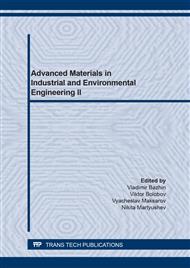p.1
p.8
p.15
p.21
p.28
p.35
p.41
p.47
Thermal Properties of Fullerene С56
Abstract:
The behavior of С56 fullerene when heated in a nitrogen atmosphere at a pressure of 105 Pa was studied using computer thermodynamic modeling. The modeling consisted in a complete thermodynamic analysis of the system using the TERRA software package, which is one of the most developed and efficient ones that implements such thermodynamic calculations. Experiment temperature ranges are from 273 to 3373 К. Based on the calculated data, a graph of the carbon balance in the С56-N2 system was constructed, the ongoing physicochemical processes were described, divided into four classes: sublimation, dissociation in the gas phase, chemical reactions occurring in the gas phase, dissociation and chemical reaction in the gas phase. Temperature intervals of reactions are identified. The equilibrium constants of the reactions are calculated and described, as well as the coefficients of these constants are found using the least squares method. The temperature interval of thermal stability of the condensed C56 fullerene and C56 vapors is defined. This work is one of the series of works on the properties of nanoparticles, in the future it is planned to study the thermal properties of higher fullerenes. The data obtained can be used to determine the explosive and fire hazardous properties of fullerenes as a dispersed solid.
Info:
Periodical:
Pages:
15-20
Citation:
Online since:
July 2021
Price:
Сopyright:
© 2021 Trans Tech Publications Ltd. All Rights Reserved
Share:
Citation:


